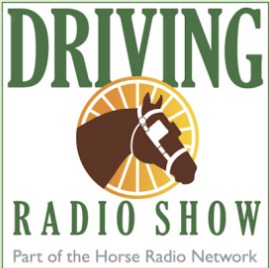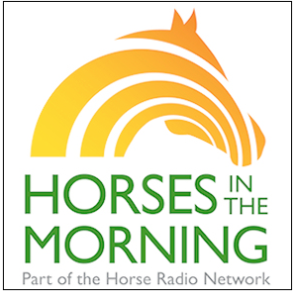|
In Episode 294 : GMHA and Dr. Coggin's Test We talk to Dr. Oscar Fletcher who was the Dean of NCSU-CVM from 1992-2004 (my Dean from way back in the 90s) to share his memories of Dr. Coggins and his insights on the history and importance of Dr. Coggins' Test. TCVM segment starts at 29:35 Why do we do the Coggins Test ?In our practice, we sometimes have clients ask...
"Why does my old retired horse need a coggins, he doesn’t go anywhere ?" or they say, " Have you ever seen a positive ?" Well thankfully no, I have never seen a positive and I hope from routine testing, I never will. With our ever increasing urbanization of the USA, even horses who don’t travel, live in close proximity to others so we have to think about herd health on a large scale. To understand the necessity of the Coggins Test, let's look at the history of Equine Infectious Anemia and the man who's pioneering work developed the test, Dr. Leroy Coggins. What is the Coggins Test ? The coggins test looks for antibodies for equine infectious anemia in the horse's blood by using the Agar Gel Immunodiffusion (AGID) test. Equine Infectious anemia is a lentivirus in the same family as HIV and FIV. These are retroviruses meaning they insert themselves into the host cell's DNA to replicate. Because of this, horses are infected for life and there is no cure and any horse with antibodies to EIA is infectious to other horses. The virus is spread by biting flies such as horse flies or deer flies. Because the bite is so painful, a fly may bite one horse and then be swatted off only to come back immediately to finish their meal. EIA can also be spread by contaminated needles, blood products and dental equipment. In 2015, an outbreak in racing quarter horses in California resulted in 34 horses being infected. 250 more horses on 19 farms were exposed and had to undergo 60 days of quarantine and testing. The 3 phases of infection The acute phase begins within 3 days to 2 weeks after infection. Horses will have a high fever, edema, be lethargic and anemic. 30 % of horses will die. These horses carry a high viremic load and 1 ml of their blood can infect 1 million horses ! A horse during the acute phase may test negative on the coggins test because he has not made antibodies to the virus yet. The 70 % who survive can be chronically infected or become inapparent carriers. Chronically infected horses may show general signs of weakness, weight loss, depression and a recurring fever. Very general signs right ? These horses will test positive on a coggins test and 1 ml of their blood can infect 10,000 horses ! The inapparent carrier state as the name implies shows little if any sign of infection. In these cases only 1 horsefly in 6 million will transmit EIA. However stress or another illness can cause a relapse and these horses can revert back to the chronic or acute phase and their viral load will increase. History I bet you didn't know that there really was a Dr. Coggins behind this test. Dr. Leroy Coggins was one of the founding administrators of NCSU College of Veterinary Medicine. He was the head of the department of Microbiology, Pathology and Parasitology. He was a well loved and respected researcher, professor and mentor. Read more about Dr. Coggins at the NCSU-CVM site EIA has been reported in all parts of the world and was 1st recognized in the US in 1890. Outbreaks were usually noted at racetracks because infected horses were brought into close quarters with other young, stressed horses. There were states designated as "hot zones" which included the southeast. At the time, the vector had yet to be determined but horses who were infected seemed to live or come from hot, damp climates and EIA was given the common name of “swamp fever”. During the 1960s, Dr. Leroy Coggins was working on his PhD in virology at Cornell University when a major outbreak occurred on Standardbred Farms in New York. By 1970, Dr. Coggins had developed a test using the AGID method to detect antibodies to Equine Infectious Anemia. Previously, a donor horse inoculation test was the only test available to screen chronically infected or exposed horses which took 4 to 8 weeks and was very expensive both monetarily and morally. In 1973, the USDA made the Coggins test the gold standard for determining exposure and prohibited any “positive reactor” from moving across state lines. Individual states determine the requirements for entry and that same year, Florida was the 1st state that required any horse being sold, moved, raced or shown to be tested and for positive horses to be quarantined or euthanized. Of course this was a shock to many horse owners who had inapparent carriers. Their horses did not look sick and there was little educational material for the general horse owner about Equine Infectious Anemia. Thankfully the Florida Department of Agriculture had the foresight to enforce these regulations to attempt to control the spread of EIA using Dr. Coggins’ Test. In 1970, 12 % of horses tested in Florida were positive. By 2000, this number dropped to 0.016% and there were zero cases of EIA in Florida in 2016 ! Nation wide, the value of the Coggins test was similar. In 1972 about 4% of horses tested nationwide were positive. By 1980, this number dropped to less than 1%. There are still occasional outbreaks reported. However mandatory routine testing seems to be keeping the prevalence to a minimum. Now that you know some details about EIA are you rethinking the importance of your coggins test ? For more info about EIA check out these links USDA-APHIS Federal Guidelines USDA-APHIS EIA discussion group notes 2015 Florida Department of Agriculture
0 Comments
Your comment will be posted after it is approved.
Leave a Reply. |
�
Dr. WendyPractices Traditional Chinese Veterinary Medicine in Sarasota, Florida Categories
All
Archives
December 2023
|
|





 RSS Feed
RSS Feed

